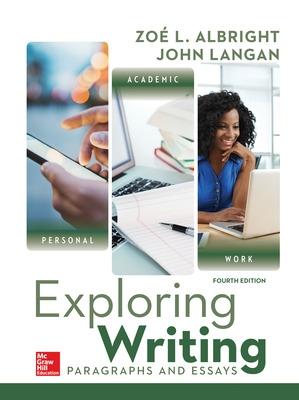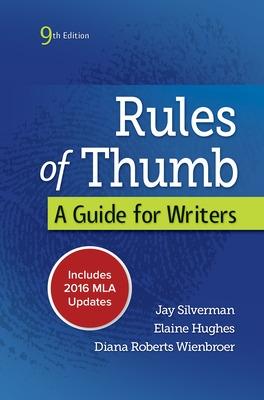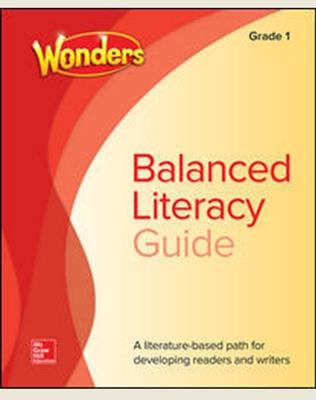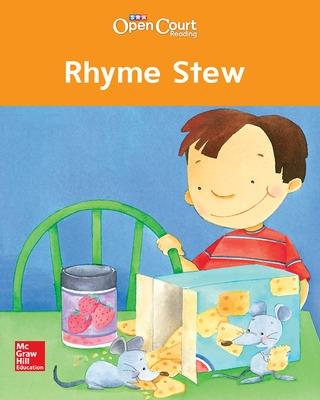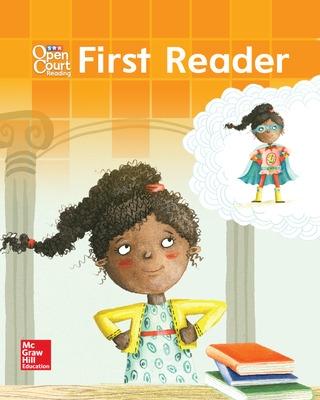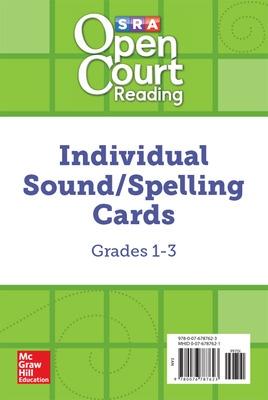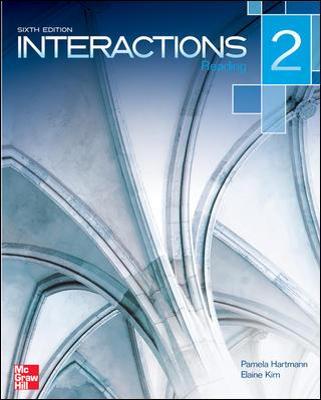McGraw-Hill Guide: Writing for College, Writing for Life
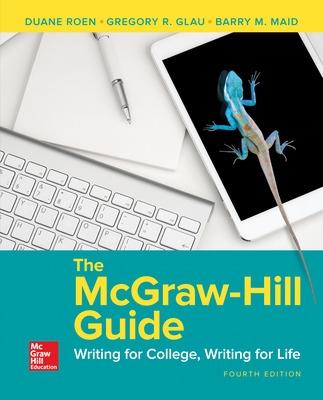 portes grátis
portes grátis
McGraw-Hill Guide: Writing for College, Writing for Life
Maid, Barry; Roen, Duane; Glau, Gregory
McGraw-Hill Education - Europe
08/2017
688
Mole
Inglês
9780078118081
15 a 20 dias
880
Writing Goals and Objectives for College and for Life
Writing in the four areas of your life
Writing as a College Student
Writing as a Professional
Writing as a Citizen
Writing as a Family Member or Friend
Writing in the Four Areas of this Course
Learning Goals in this Course
Rhetorical Knowledge
Rhetorical Analysis
Critical Thinking, Reading, and Writing
Writing Process
Knowledge of Convention
Composition in Electronic Environments
Becoming a Self-Reflective Writer
*Strategies for Success
Reading Critically for College and for Life
Why Read Critically? Integrating Sources into Your Own Writing
Using Prereading Strategies
Reading Actively
Annotating Effectively
Reading Visuals
Reading Web Sites
Using Postreading Strategies
Starting Your Writer's/Research Journal
Writing Effective Summaries
Synthesizing Information in Readings
Using Your Reading in Your Writing
Constructing a Rhetorical Analysis
Writing to Understand and Synthesize Texts [New Chapter]
Setting Your Goals
Rhetorical Knowledge
Writing to Understand and Synthesize Texts
Writing Assignment Options
Critical Thinking, Reading, and Writing
Qualities of Effective Writing to Understand and Synthesize Texts
Reading to Learn about Understanding and Synthesizing Texts
*Danny Goldberg, Kill the Internet-and Other Anti-SOPA Myths (Editorial)
*Jimmy Wales and Kat Walsh, We Are the Media, and So Are You (Editorial)
*Margaret Munson, Critical Response to "We Are the Media, and So Are You" (Student Essay)
Writing Processes
Invention: Getting Started
Organizing Your Ideas and Details
Constructing a Complete Draft
Revising
Knowledge of Conventions
Editing
Genres, Documentation, and Format
A Writer Achieves Her Goal: Margaret Munson's Synthesis
*Margaret Munson, Protecting Creativity in a Wired World: Two Perspectives (Student Essay)
Self-Assessment: Reflecting on Your Goals
Writing to Discover and to Learn
Using Invention Strategies to Discover Ideas
Listing
Freewriting
Questioning
Answering the Questions Who? What? When? Why? and How?
Brainstorming
Clustering
Keeping Notebooks and Journals
Double-entry Notebook
Field Notebook
Rewriting Your Class Notes
Minute Paper
Muddiest Point
Preconception Check
Paraphrasing
Organizing and Synthesizing Information
Invented Interview/Unsent Letter
Using Charts and Visuals to Discover and to Learn
Clustering and Concept Mapping
Process Flowchart
Studying for Exams
Test Questions
Mnemonic Play
Part Two: Using What You Have Learned to Share Information
Writing to Share Experiences
Setting Your Goals
Rhetorical Knowledge
Writing to Share Experiences
Scenarios for Writing: Assignment Options
Critical Thinking, Reading, and Writing
Qualities of Effective Writing about Experiences
Reading to Learn about Writing That Shares Experiences
Tanya Barrientos, Se Habla Espanol (Memoir)
*Sherman Alexie, Superman and Me (Literacy Narrative) [print book only]
*Brad Whetstine, Augustinian Influences (Literacy Narrative) [ebook only]
Suki Kim, Facing Poverty with a Rich Girl's Habits (Memoir) [ebook only]
Writing Processes
Invention: Getting Started
Organizing Your Ideas and Details
Constructing a Complete Draft
Revising
Knowledge of Conventions
Editing
Genres, Documentation, and Format
A Writer Achieves Her Goal: Jessica Hemauer's Final Draft
Jessica Hemauer, Farm Girl (Student Essay)
Self-Assessment: Reflecting on Your Goals
Writing to Explore
Setting Your Goals for Exploratory Writing
Rhetorical Knowledge
Writing to Explore in Your College Classes
Writing to Explore for Life
Scenarios for Writing: Assignment Options
Critical Thinking, Reading, and Writing
Learning the Qualities of Effective Exploratory Writing
Reading, Inquiry, and Research: Learning from Texts That Explore
*Andrew Sullivan, Excerpt from "Why I Blog" (Reflective Essay)
*Owen Edwards, The Tuskegee Airmen Plane's Last Flight (Profile of an Event)
*Kiva Web site (Profile)
*Jesse Kornbluth Excerpt from "World's Best Blogger?" (Profile) [ebook only]
Writing Processes
Invention: Getting Started
Exploring Your Ideas with Research
Organizing Your Ideas and Details
Constructing a Complete Draft
Revising
Knowledge of Conventions
Editing
Genres, Documentation, and Format
A Writer Achieves His Goal: Rick Mohler's Final Draft
Rick Mohler, A Sporting Career? (Student Essay)
Self-Assessment: Reflecting on Your Goals
Writing to Inform [Note: Chapters 7-12 follow the same basic structure as Chapter 6.]
Carol Ezzell, Clocking Cultures (Informative Article)
*Dan Fletcher, A Brief History of Wikipedia (Informative Article)
*Tom Broadbent, Annotated Bibliography
Craig Broadbent Watch for the Blue Barrels (Student Essay)
Writing to Analyze
James M. Lang, Putting in the Hours (Opinion Piece)
*Susan Cain, The Power of Introverts (Analysis)
*Ashley TenBrink, A Rider Frozen in Motion (Visual Analysis)
Sarah Washington, Campus Parking: Love it or Leave It (Student Essay)
Part Three: Using What You've Learned to Write Arguments
Writing to Convince
*Marian Wright Edelman, Still Hungry in America (Opinion Piece)
Maureen Dowd, Our Own Warrior Princess (Editorial)
Allsup Organ Donation Poster (Advertisement)
Anne Applebaum, When Women Go to War (Editorial) [ebook only]
Santi DeRosa, The Objectification of Women: Whose Fault Is It? (Student Essay)
Writing to Evaluate
*Jonathan Liu, "The 5 Best Toys of All Time" (Opinion Piece)
*Roger Ebert, Harry Potter and the Deathly Hallows, Part 2 (Review)
*Andrew O'Hehir, "'Harry Potter and the Deathly Hallows, Part 2': An Action-Packed Curtain Call" (Review)
Annlee Lawrence, Who Has the Better Burger? (Student Essay)
Writing to Explain Causes and Effects
Juan Williams, The Ruling That Changed America (Cause-and-Effect Essay)
Neal Gabler, How Urban Myths Reveal Society's Fears (Cause-and-Effect Essay)
Robert Reich The Real Reason Why Highway Deaths Are Down (Blog) [ebook only]
*Aprilyus, Anti-Smoking Poster (Cause-and-Effect Poster)
*Hanna Lake, Brothers, Brethren, and Kin: The Role of Family in the Lives of Harriet Jacobs and Black Hawk (Student Essay)
Writing to Solve Problems
*Anya Kamenetz, The Case for Girls (Proposal Essay)
*Virginia Heffernan, Education Needs a Digital-Age Upgrade (Opinion Piece)
Amy Baskin and Heather Fawcett, Request for a Work Schedule Change (Memo)
Michael Berube, How to End Grade Inflation (Op-Ed Article) [ebook only]
*Susan DeMedeiros, Staying ahead of Skimming Scams (Student Essay)
Part Four: Strategies for Effective Communication
Using Strategies That Guide Readers
Announcing a Thesis or Controlling Idea
Writing Paragraphs
Placement of Topic Sentences
Moving to a New Paragraph
Opening Paragraphs
Concluding Paragraphs
Using Cohesive Devices
Using Connective Words or Phrases
Using Word Repetition
Using Pronoun Reference
Using Transitional Sentences and Paragraphs
Using Headings
Writing Narratives
Narrating Single Events or a Series of Events
Narrating Processes
Writing Descriptions
Naming in Description
A Sensory Approach to Description
A Spatial Approach to Description
Writing Definitions
Kinds of Definitions
Writing Classifications
Writing about Comparisons and Contrasts
Approaches to Comparison and Contrast
Using Outlines and Maps to Organize Your Writing
Using Strategies for Argument
Argument and Persuasion
Rhetorical Appeals
Logical Appeals
Ethical Appeals
Emotional Appeals
The Rhetorical Triangle: Considering the Appeals Together
Three Approaches to Argument
Classical Strategies for Arguing
Parts of a Classical Argument
Example: The Classical Scheme in Action
David Wolman, Time to Cash Out: Why Paper Money Hurts the Economy
Toulmin Approach to Argument
Example: The Toulmin Model in Action
*Jordan Weissman, The Myth of En
ergy Independence: Why We Can't Drill Our Way to Oil Autonomy
Rogerian Strategies for Arguing
Example: Rogerian Strategies in Action
Rick Reilly, Nothing but Nets
Some Common Flaws in Arguments
Using Strategies for Collaboration
Working with Peers on Your Single-Authored Projects
Strategies for Working with Peers on Your Projects
Using Digital Tools for Peer Review
Working with Peers on Multiple-Authored Projects
Strategies for Working with Peers Effectively
Using Digital Tools to Facilitate Multiple-Authored Projects
Making Effective Oral Presentations
Developing Your Presentation
Establishing a Clear Structure
Considering Your Audience
Eliminating the Fear of Speaking in Public
Other Tips for Making Effective Oral Presentations
*Online Presentations
Part Five: Technologies for Effective Communication
Choosing a Medium, Genre, and Technology for Your Communication
Communication Technologies
Publishing Your Work
Selecting a Genre and Medium
Deciding on a Genre for Your Work
Deciding Whether to Use Print, Electronic, or Oral Media
Considering Design
Technologies for Computer-Mediated Communication
Threaded Discussions
Synchronous Chat
Blogs
Wikis
Word-Processing Software
Peer-Review Applications
Graphics Software
Desktop Publishing Software
Presentation Software
Technologies for Constructing Web Pages
Communicating with Design and Visuals
Principles of Document Design
Proximity
Contrast
Alignment
Repetition (or Consistency)
Designing New Media
Common Kinds of Visual Texts
Tables
Bar and Line Graphs
Charts
Photographs
Drawings
Diagrams
Maps
Cartoons
Using Visuals Rhetorically
Considering Your Audience
Considering Your Purpose
Using Visuals Responsibly
Permissions
Distortions
Part Six: Using Research for Informed Communication
Finding and Evaluating Information
Conducting Effective Library and Web-Based Research: An Example
Library Research
Research on the Web
Selecting Sources
Books
Academic Journals
Newspapers
Popular Magazines
Trade or Commercial Magazines
Public Affairs Magazines
Specialty Magazines
The Internet
Evaluating Your Sources: Asking the Reporter's Questions
Who Is the Author?
What Is the Text About? What Is the Quality of the Information?
When Was the Text Published or the Web Site Last Updated?
Why Was This Information Published?
Where Was the Item Published?
How Accurate Is the Information in This Source
Field Research
Working with Human Participants
Informed Consent
Observations
Interviews
Surveys
Synthesizing and Documenting Sources
An Overview of Documentation
Plagiarism
Inadequate or Incorrect Citations
Patchwriting
Anti-plagiarism Software
Quotations
Paraphrases
Summaries
Syntheses
MLA Documentation Style
MLA Style: In-Text Citation
MLA Style: Constructing a List of Works Cited
MLA Style: Sample Student Paper
APA Documentation Style
APA Style: In-Text Citation
APA Style: Constructing a References List
APA Style: Sample Student Paper
Appendix A Constructing a Writing Portfolio
Appendix B Writing Effective Essay Examinations
Appendix C Standard Document Forms
eBook Chapters (Also available in Create)
Writing about Visual Texts [New Chapter]
Setting Your Goals
Rhetorical Knowledge
Writing about Visual Texts
Writing Assignment Options
Critical Thinking, Reading, and Writing
Qualities of Effective Writing to Analyze Visuals
Reading to Learn about Analyzing Visual Texts
*Will Storey, Revisiting the Daisy Ad Revolution (Visual Analysis)
*Sebastian Smee, From Chaos, a Suspended Beauty (Visual Analysis)
Writing Processes
Invention: Getting Started
Organizing Your Ideas and Details
Constructing a Complete Draft
Revising
Knowledge of Conventions
Editing
Genres, Documentation, and Format
A Writer Achieves His Goal: Jayson Bailey's Visual Analysis
*Jayson Bailey, Riding a Harley Is an American Freedom (Student Essay)
Self-Assessment: Reflecting on Your Goals
Writing about Creative Works
Setting Your Goals
Rhetorical Knowledge
Writing about Creative Works
Writing to Learn about Literary Works
*Jamaica Kincaid, Girl
Amy Tan, Alien Relative
Writing Processes
Selecting a Creative Work to Write About
Recording Your Initial Responses
Finding a Feature to Analyze
Integrating Visuals When Writing about Creative Works
Organizing Your Ideas
Constructing a Full Draft
Revising
Knowledge of Conventions
Editing
Genres, Documentation, and Format
A Writer Achieves Her Goal: Katrina Montgomery's Final Draft
*Katrina Montgomery, Indirect Characterization in Jamaica Kincaid's "Girl" (Student Essay)
Self-Assessment: Reflecting on Your Goals
Appendix A Constructing a Writing Portfolio
Appendix B Writing Effective Essay Examinations
Appendix C Standard Document Forms
Writing Goals and Objectives for College and for Life
Writing in the four areas of your life
Writing as a College Student
Writing as a Professional
Writing as a Citizen
Writing as a Family Member or Friend
Writing in the Four Areas of this Course
Learning Goals in this Course
Rhetorical Knowledge
Rhetorical Analysis
Critical Thinking, Reading, and Writing
Writing Process
Knowledge of Convention
Composition in Electronic Environments
Becoming a Self-Reflective Writer
*Strategies for Success
Reading Critically for College and for Life
Why Read Critically? Integrating Sources into Your Own Writing
Using Prereading Strategies
Reading Actively
Annotating Effectively
Reading Visuals
Reading Web Sites
Using Postreading Strategies
Starting Your Writer's/Research Journal
Writing Effective Summaries
Synthesizing Information in Readings
Using Your Reading in Your Writing
Constructing a Rhetorical Analysis
Writing to Understand and Synthesize Texts [New Chapter]
Setting Your Goals
Rhetorical Knowledge
Writing to Understand and Synthesize Texts
Writing Assignment Options
Critical Thinking, Reading, and Writing
Qualities of Effective Writing to Understand and Synthesize Texts
Reading to Learn about Understanding and Synthesizing Texts
*Danny Goldberg, Kill the Internet-and Other Anti-SOPA Myths (Editorial)
*Jimmy Wales and Kat Walsh, We Are the Media, and So Are You (Editorial)
*Margaret Munson, Critical Response to "We Are the Media, and So Are You" (Student Essay)
Writing Processes
Invention: Getting Started
Organizing Your Ideas and Details
Constructing a Complete Draft
Revising
Knowledge of Conventions
Editing
Genres, Documentation, and Format
A Writer Achieves Her Goal: Margaret Munson's Synthesis
*Margaret Munson, Protecting Creativity in a Wired World: Two Perspectives (Student Essay)
Self-Assessment: Reflecting on Your Goals
Writing to Discover and to Learn
Using Invention Strategies to Discover Ideas
Listing
Freewriting
Questioning
Answering the Questions Who? What? When? Why? and How?
Brainstorming
Clustering
Keeping Notebooks and Journals
Double-entry Notebook
Field Notebook
Rewriting Your Class Notes
Minute Paper
Muddiest Point
Preconception Check
Paraphrasing
Organizing and Synthesizing Information
Invented Interview/Unsent Letter
Using Charts and Visuals to Discover and to Learn
Clustering and Concept Mapping
Process Flowchart
Studying for Exams
Test Questions
Mnemonic Play
Part Two: Using What You Have Learned to Share Information
Writing to Share Experiences
Setting Your Goals
Rhetorical Knowledge
Writing to Share Experiences
Scenarios for Writing: Assignment Options
Critical Thinking, Reading, and Writing
Qualities of Effective Writing about Experiences
Reading to Learn about Writing That Shares Experiences
Tanya Barrientos, Se Habla Espanol (Memoir)
*Sherman Alexie, Superman and Me (Literacy Narrative) [print book only]
*Brad Whetstine, Augustinian Influences (Literacy Narrative) [ebook only]
Suki Kim, Facing Poverty with a Rich Girl's Habits (Memoir) [ebook only]
Writing Processes
Invention: Getting Started
Organizing Your Ideas and Details
Constructing a Complete Draft
Revising
Knowledge of Conventions
Editing
Genres, Documentation, and Format
A Writer Achieves Her Goal: Jessica Hemauer's Final Draft
Jessica Hemauer, Farm Girl (Student Essay)
Self-Assessment: Reflecting on Your Goals
Writing to Explore
Setting Your Goals for Exploratory Writing
Rhetorical Knowledge
Writing to Explore in Your College Classes
Writing to Explore for Life
Scenarios for Writing: Assignment Options
Critical Thinking, Reading, and Writing
Learning the Qualities of Effective Exploratory Writing
Reading, Inquiry, and Research: Learning from Texts That Explore
*Andrew Sullivan, Excerpt from "Why I Blog" (Reflective Essay)
*Owen Edwards, The Tuskegee Airmen Plane's Last Flight (Profile of an Event)
*Kiva Web site (Profile)
*Jesse Kornbluth Excerpt from "World's Best Blogger?" (Profile) [ebook only]
Writing Processes
Invention: Getting Started
Exploring Your Ideas with Research
Organizing Your Ideas and Details
Constructing a Complete Draft
Revising
Knowledge of Conventions
Editing
Genres, Documentation, and Format
A Writer Achieves His Goal: Rick Mohler's Final Draft
Rick Mohler, A Sporting Career? (Student Essay)
Self-Assessment: Reflecting on Your Goals
Writing to Inform [Note: Chapters 7-12 follow the same basic structure as Chapter 6.]
Carol Ezzell, Clocking Cultures (Informative Article)
*Dan Fletcher, A Brief History of Wikipedia (Informative Article)
*Tom Broadbent, Annotated Bibliography
Craig Broadbent Watch for the Blue Barrels (Student Essay)
Writing to Analyze
James M. Lang, Putting in the Hours (Opinion Piece)
*Susan Cain, The Power of Introverts (Analysis)
*Ashley TenBrink, A Rider Frozen in Motion (Visual Analysis)
Sarah Washington, Campus Parking: Love it or Leave It (Student Essay)
Part Three: Using What You've Learned to Write Arguments
Writing to Convince
*Marian Wright Edelman, Still Hungry in America (Opinion Piece)
Maureen Dowd, Our Own Warrior Princess (Editorial)
Allsup Organ Donation Poster (Advertisement)
Anne Applebaum, When Women Go to War (Editorial) [ebook only]
Santi DeRosa, The Objectification of Women: Whose Fault Is It? (Student Essay)
Writing to Evaluate
*Jonathan Liu, "The 5 Best Toys of All Time" (Opinion Piece)
*Roger Ebert, Harry Potter and the Deathly Hallows, Part 2 (Review)
*Andrew O'Hehir, "'Harry Potter and the Deathly Hallows, Part 2': An Action-Packed Curtain Call" (Review)
Annlee Lawrence, Who Has the Better Burger? (Student Essay)
Writing to Explain Causes and Effects
Juan Williams, The Ruling That Changed America (Cause-and-Effect Essay)
Neal Gabler, How Urban Myths Reveal Society's Fears (Cause-and-Effect Essay)
Robert Reich The Real Reason Why Highway Deaths Are Down (Blog) [ebook only]
*Aprilyus, Anti-Smoking Poster (Cause-and-Effect Poster)
*Hanna Lake, Brothers, Brethren, and Kin: The Role of Family in the Lives of Harriet Jacobs and Black Hawk (Student Essay)
Writing to Solve Problems
*Anya Kamenetz, The Case for Girls (Proposal Essay)
*Virginia Heffernan, Education Needs a Digital-Age Upgrade (Opinion Piece)
Amy Baskin and Heather Fawcett, Request for a Work Schedule Change (Memo)
Michael Berube, How to End Grade Inflation (Op-Ed Article) [ebook only]
*Susan DeMedeiros, Staying ahead of Skimming Scams (Student Essay)
Part Four: Strategies for Effective Communication
Using Strategies That Guide Readers
Announcing a Thesis or Controlling Idea
Writing Paragraphs
Placement of Topic Sentences
Moving to a New Paragraph
Opening Paragraphs
Concluding Paragraphs
Using Cohesive Devices
Using Connective Words or Phrases
Using Word Repetition
Using Pronoun Reference
Using Transitional Sentences and Paragraphs
Using Headings
Writing Narratives
Narrating Single Events or a Series of Events
Narrating Processes
Writing Descriptions
Naming in Description
A Sensory Approach to Description
A Spatial Approach to Description
Writing Definitions
Kinds of Definitions
Writing Classifications
Writing about Comparisons and Contrasts
Approaches to Comparison and Contrast
Using Outlines and Maps to Organize Your Writing
Using Strategies for Argument
Argument and Persuasion
Rhetorical Appeals
Logical Appeals
Ethical Appeals
Emotional Appeals
The Rhetorical Triangle: Considering the Appeals Together
Three Approaches to Argument
Classical Strategies for Arguing
Parts of a Classical Argument
Example: The Classical Scheme in Action
David Wolman, Time to Cash Out: Why Paper Money Hurts the Economy
Toulmin Approach to Argument
Example: The Toulmin Model in Action
*Jordan Weissman, The Myth of En
ergy Independence: Why We Can't Drill Our Way to Oil Autonomy
Rogerian Strategies for Arguing
Example: Rogerian Strategies in Action
Rick Reilly, Nothing but Nets
Some Common Flaws in Arguments
Using Strategies for Collaboration
Working with Peers on Your Single-Authored Projects
Strategies for Working with Peers on Your Projects
Using Digital Tools for Peer Review
Working with Peers on Multiple-Authored Projects
Strategies for Working with Peers Effectively
Using Digital Tools to Facilitate Multiple-Authored Projects
Making Effective Oral Presentations
Developing Your Presentation
Establishing a Clear Structure
Considering Your Audience
Eliminating the Fear of Speaking in Public
Other Tips for Making Effective Oral Presentations
*Online Presentations
Part Five: Technologies for Effective Communication
Choosing a Medium, Genre, and Technology for Your Communication
Communication Technologies
Publishing Your Work
Selecting a Genre and Medium
Deciding on a Genre for Your Work
Deciding Whether to Use Print, Electronic, or Oral Media
Considering Design
Technologies for Computer-Mediated Communication
Threaded Discussions
Synchronous Chat
Blogs
Wikis
Word-Processing Software
Peer-Review Applications
Graphics Software
Desktop Publishing Software
Presentation Software
Technologies for Constructing Web Pages
Communicating with Design and Visuals
Principles of Document Design
Proximity
Contrast
Alignment
Repetition (or Consistency)
Designing New Media
Common Kinds of Visual Texts
Tables
Bar and Line Graphs
Charts
Photographs
Drawings
Diagrams
Maps
Cartoons
Using Visuals Rhetorically
Considering Your Audience
Considering Your Purpose
Using Visuals Responsibly
Permissions
Distortions
Part Six: Using Research for Informed Communication
Finding and Evaluating Information
Conducting Effective Library and Web-Based Research: An Example
Library Research
Research on the Web
Selecting Sources
Books
Academic Journals
Newspapers
Popular Magazines
Trade or Commercial Magazines
Public Affairs Magazines
Specialty Magazines
The Internet
Evaluating Your Sources: Asking the Reporter's Questions
Who Is the Author?
What Is the Text About? What Is the Quality of the Information?
When Was the Text Published or the Web Site Last Updated?
Why Was This Information Published?
Where Was the Item Published?
How Accurate Is the Information in This Source
Field Research
Working with Human Participants
Informed Consent
Observations
Interviews
Surveys
Synthesizing and Documenting Sources
An Overview of Documentation
Plagiarism
Inadequate or Incorrect Citations
Patchwriting
Anti-plagiarism Software
Quotations
Paraphrases
Summaries
Syntheses
MLA Documentation Style
MLA Style: In-Text Citation
MLA Style: Constructing a List of Works Cited
MLA Style: Sample Student Paper
APA Documentation Style
APA Style: In-Text Citation
APA Style: Constructing a References List
APA Style: Sample Student Paper
Appendix A Constructing a Writing Portfolio
Appendix B Writing Effective Essay Examinations
Appendix C Standard Document Forms
eBook Chapters (Also available in Create)
Writing about Visual Texts [New Chapter]
Setting Your Goals
Rhetorical Knowledge
Writing about Visual Texts
Writing Assignment Options
Critical Thinking, Reading, and Writing
Qualities of Effective Writing to Analyze Visuals
Reading to Learn about Analyzing Visual Texts
*Will Storey, Revisiting the Daisy Ad Revolution (Visual Analysis)
*Sebastian Smee, From Chaos, a Suspended Beauty (Visual Analysis)
Writing Processes
Invention: Getting Started
Organizing Your Ideas and Details
Constructing a Complete Draft
Revising
Knowledge of Conventions
Editing
Genres, Documentation, and Format
A Writer Achieves His Goal: Jayson Bailey's Visual Analysis
*Jayson Bailey, Riding a Harley Is an American Freedom (Student Essay)
Self-Assessment: Reflecting on Your Goals
Writing about Creative Works
Setting Your Goals
Rhetorical Knowledge
Writing about Creative Works
Writing to Learn about Literary Works
*Jamaica Kincaid, Girl
Amy Tan, Alien Relative
Writing Processes
Selecting a Creative Work to Write About
Recording Your Initial Responses
Finding a Feature to Analyze
Integrating Visuals When Writing about Creative Works
Organizing Your Ideas
Constructing a Full Draft
Revising
Knowledge of Conventions
Editing
Genres, Documentation, and Format
A Writer Achieves Her Goal: Katrina Montgomery's Final Draft
*Katrina Montgomery, Indirect Characterization in Jamaica Kincaid's "Girl" (Student Essay)
Self-Assessment: Reflecting on Your Goals
Appendix A Constructing a Writing Portfolio
Appendix B Writing Effective Essay Examinations
Appendix C Standard Document Forms

